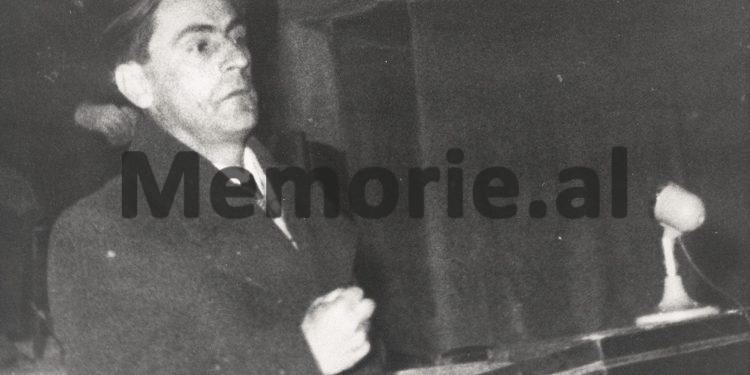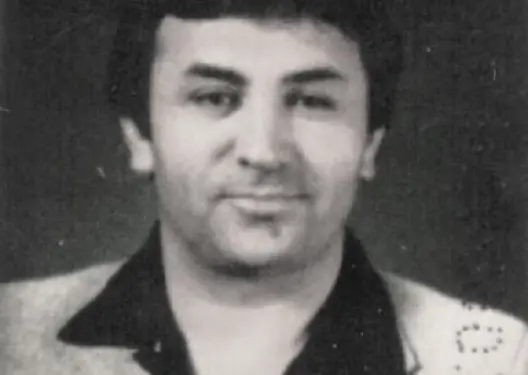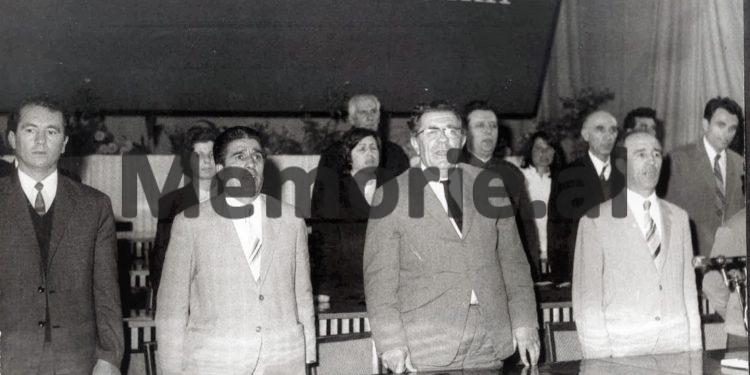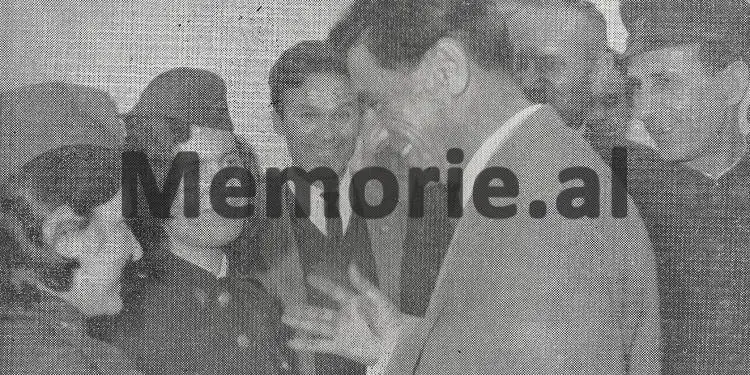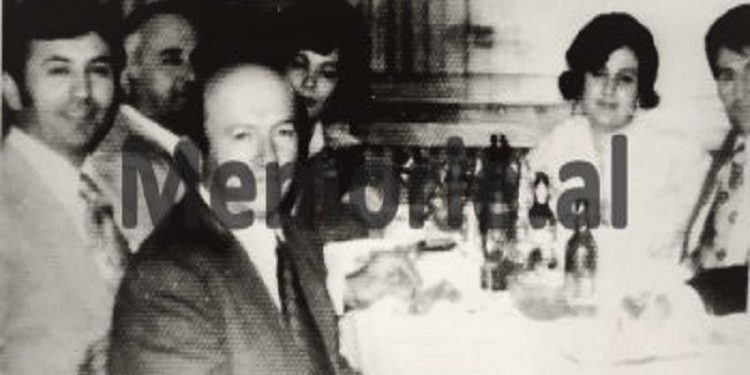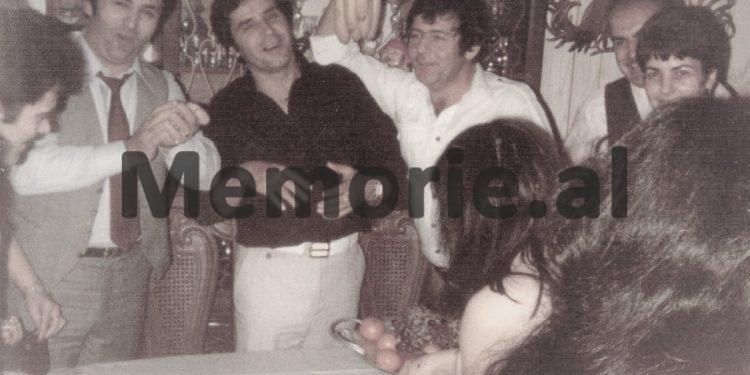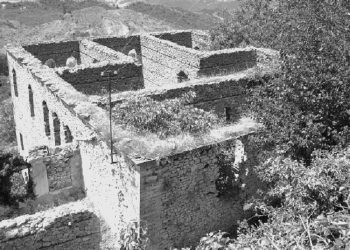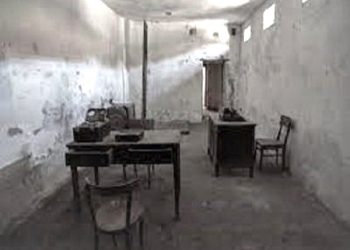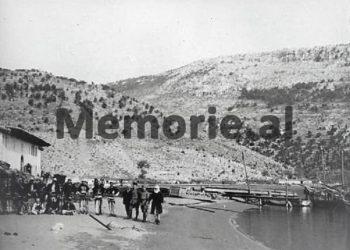By Afrim Imaj
Second part
Memorie.al / “For almost thirty years, I have seen how Enver Hoxha relaxed over the photographs of his victims. He spent around 6 hours a day on the photographs of the shot dead bodies of Koçi Xoxes, Beqir Balluku, Petrit Dumes and Hito Çakos. But on the photographs of Mehmet Shehu and those of Xhevdet Mustafa and others who were killed in that event, he has relaxed for over three days”. This is the chilling testimony of the officer, who has stayed with Enver Hoxha for around 20 years. According to the former senior soldier, Enveri was extremely fond of photographs of bodies killed by bullets. This love first appeared to him in 1945. After one of his close people was declared an enemy of the party and the court decided that he should be shot, another procedure began. As soon as the prosecutor had given the convict “Colpo di gracia”, then a professional photographer had to take over 30 photos of the bloodied body, in 30 different positions, and the photos had to be washed and stamped within six hours.
Continues from last issue
The full report that was sent to Enver Hoxha, about the landing and elimination of Xhevdet Mustafa’s gang and the photographs of the corpses!
“On September 26, 1982, the commander’s office received a detailed report of the murder of Xhevdet Mustafa and the annihilation of the gang led by him. Together with the detailed report, hundreds of photographs that were taken of the corpse of Xhevdet Mustafa and the corpse of Sabahudin Haznedari arrived.
Likewise, the detailed report of Xhevdet Mustafa’s gang and the special role of Hekuran Isai, Muho Asllani and Kadri Hazbiu, was accompanied by dozens of other photographs from the scene.
The group that made the detailed expertise of this unusual event had taken dozens of photos of the two policemen killed, as well as the peasant-smith, from the village of Zhamë.
All the objects that were captured from the leader of the gang, Xhevdet Mustafa, and especially the photographs of his corpse, have been on display for almost eight years, in the Museum of the Ministry of the Interior, which was located where the General Directorate of Prisons is today. The Museum of the Ministry of the Interior was opened by the personal order of Enver Hoxha and all the photos that have been placed in this museum are said to have been placed with his approval and order.
He looked very carefully at all the photos that would be exhibited, starting with the photos of Koçi Xoxes and continuing with the photos of all the members of the Political Bureau, who were shot over the years, as “enemies of the people”. But the photos of Xhevdet Mustafa, killed in Zhama in Lushnja, occupied the main stands, where the most macabre scenes were reflected, which were the last ones to be published in that museum.
The sniper specially brought by the Fier Military Corps, who knocked down the wall of the house where Xhevdet Mustafa was stationed and shot at him with the 12.5 millimeter gun, was photographed several times and placed in one of the stands of that museum. The entire fund of more than 1000 photographs, of the Museum of the Ministry of the Interior, is located in the Archive of the Ministry of the Interior, in box 560, while all the relics are in a warehouse on the second floor of the annex of the Ministry.
But, in the whole scenario of the murder of Xhevdet Mustafa and Sabahudin Haznedari, the most interesting are two very interesting events. The pie seller at the Rrogozhina train station was an associate of the State Security, with the nickname “Trenistja”. Meanwhile, a Roma woman ignored the order of Hekuran Isai, Muho Asllani and all other State Security officials to kill Xhevdet Mustafa. She has clearly stated that; “I have not killed and will not kill anyone, even to protect the Party and Comrade Enver Hoxha”.
The incident of Xhevdet Mustafa’s gang, September 24, 1982
“From the outskirts of the Port of Bari, a special boat was launched, which was driven by two so-called Italian fishermen. Xhevdet Mustafa, Sabahudin Haznedari and Halit Bajrami were on its board. The Italian boat arrived at the Albanian coast on September 25, 1982, at 01:00. The gang was supposed to land at Kavaja Rock at this hour. But with the insistence of Sabahudin Haznedari, the gang went down to Divjaka. Xhevdet Mustafa, escaped in 1964, lived in the USA, where he was married and had two children.
Halit Bajrami and Sabahudin Haznedari had escaped in 1951. The three members of the gang tried to enter the depths, but it was impossible. They were hindered by the swamp and thus spend the night on the coast of Divjaka. At noon, a police motorboat appeared near them, from which two police officers got out, who took off their police clothes and came out in bathing suits. The two police officers were killed within five seconds, by Xhevdet Mustafa. The policeman Sokrat Biti had been with them, but he was wearing a fisherman’s uniform.
Xhevdet Mustafa spared the life of the policeman, whom he mistook for a fisherman. The policeman was forced by Xhevdet Mustafa, but also by other members of the gang, to act as an escort. He traveled together with them and accompanied them to the train station in Rrogozhin. The gang found themselves in front of an unexpected. The clock had changed that day and they lost track of the trains by an hour, even though the gang knew exactly what time the trains ran.
Xhevdet Mustafa, along with other members of the gang, pretended to be casual customers and behaved normally as Albanians. But the pie seller, inside the train station, was an associate of the State Security, with the nickname “Trenistja”, and suspecting the Albanian spoken thickly by Xhevdet Mustafa and the other three gang members, she suspected, immediately notifying the Security operative, according to the code of communication they had with each other.
The security employee had previously noticed Xhevdet Mustafa’s sneakers, which were of the “ADIDAS” brand, which were a foreign microbourgeois show for the one who wore them. The operative immediately went to Halit Bajrami and asked for the notification letter. Halit Bajrami handed over the pistol and told him, according to the jargon of the State Security, about the danger posed by the presence of Xhevdet Mustafa, inside the train station.
Sabahudin Haznedari, stole from the table and took a seat in a bunker, located next to the train station. He was destroyed in a very short time, by a volley of bullets, which came from an undetermined direction. Xhevdet Mustafa, at first got into a “ZUK” type van, which was located at the entrance of the train station and changing cars twice, he arrived at a house on a hill, in Zhama, Lushnja.
The Roma woman who ignored the order of Hekuran Isai and Muho Asllani to shoot at Xhevdet Mustafa
The surrendered Halit Bajrami, the officers of the Security of Rrogozhina, massacred him by hitting him with the butt of the pistols, in order to learn the truth from his side. The officers who hit him relentlessly with pistols did not know that they were dealing with one of their colleagues, who had the task of infiltrator and whose purpose was to bring Xhevdet Mustafa’s gang to Albania. The members of the Political Bureau, Muho Asllani, Hekuran Isai and Kadri Hazbiu arrived at the scene in a flash.
In the report it is written how; “comrade Hekuran Isai has retorted very harshly with Kadri Hazbiu. The owner of the house where Xhevdet Mustafa arrived resisted and did not want him to enter the house”. He was executed in cold blood by Xhevdet Mustafa, in front of his wife and children. Xhevdet Mustafa took the woman out and held the two children hostage. In the implementation of the tasks by the Security forces, there was a great hesitation, due to the lack of experience. Ferit Zeneli, the deputy minister of the interior, reported to Hekuran Isai, that the house was surrounded. The operation was led by Caplan Shehu, head of the Internal Department of Lushnja district.
A very important role in the organization of the operation was played by one of the most skilled and prominent employees of the State Security, Pëllumb Kapo, the son of Hysni Kapo. One of the children (girl), who had taken Xhevdet Mustafa hostage, was injured by a ricochet bullet, tearing off a toe. He was covered in blood and Xhevdet Mustafa asked the mother of this child to take him. If someone accompanied him, then he would kill him.
All State Security specialists called the woman. It was suggested that she get a pistol, disguise it and when she gets the wounded boy, kill Xhevdet Mustafa. But the woman refused to kill Xhevdet Mustafa. She replied that; “I have not killed anyone and I cannot perform such a task…”! Although he ordered Hekuran Isai and Muho Asllani to do such a thing, she refused to do it….!
At the proposal of Kadri Hazbiu, after the strong objections of the blacksmith’s wife from Zhama e Lushnja, for the woman to go inside her house to take the injured child, everyone remained speechless, after the woman’s firm answer, that she could not go armed and kill Xhevdet Mutafa, even though for almost two hours, she had filled her mind that he was the enemy of Paris and the People and had come as a saboteur to Albania, to kill Enver Hoxha.
The Roma woman refused to go armed and after the anxiety that had lasted for about an hour, she headed home and everyone was waiting to hear the crack of the gun, with which Xhevdet Mustafa would shoot the woman. But a big and surprising surprise happened. The woman quietly left the house with the two children, one of whom, the injured one, she was holding on her arm. Then it was proven that the child was not injured by Xhevdet Mustafa, but was injured by a bullet that ricocheted.
Enver’s fury when he learned that Hekuran Isai failed to capture Xhevdet Mustafa alive!
The murder of Xhevdet Mustafa is one of the most complicated stories of the State Security, which had planned for the gang to arrive on September 16, 1982. The State Security had the first information about the dangerous gang on April 11 1982. The assassination attempt against Enver Hoxha, by Xhevdet Mustafa, was planned in the tribune of the celebration of the 60th anniversary of the Peza Conference. Hekuran Isai, Kapllan Shehu and Pëllumb Kapo, for almost an hour, discussed how Xhevdet Mustafa could be captured alive.
Also, from the other side, the group led by Kadri Hazbiu and Muho Asllani, have made many efforts to find a way to capture Xhevdet Mustafa alive. He was surrounded in the blacksmith’s house in the village of Zhamë. Muho Asllani, saved not only the two members of the Political Bureau, but also the most skilled State Security specialists from great embarrassment. He proposed that Xhevdet Mustafa’s family members be brought to the scene. It was proposed that Xhevdet Mustafa’s mother be put in the house where Xhevdet himself was protected. It was thought that she could convince her son to surrender.
Muho’s opinion was approved by Kadri Hazbiu himself. Captain Shehu told Xhevdet Mustafa through a megaphone that they would bring his mother and father to the scene, so it was good that he surrendered. Xhevdet Mustafa answered with a truncated Albanian. “I never give up alive. You bring whoever you want. They put me in a trap and cut off the allegiance of the Albanian, but I never do business with the communists. I hated them and I hate them forever.” After this answer, the Durrës Internal Branch was notified to take the family members of Xhevdet Mustafa, who were under the supervision of the Second Directorate of State Security.
The condition of Xhevdet Mustafa’s family was very miserable. His mother was dressed in black and had a white scarf on her head. But before they arrived in Rrogozhin, they were stopped by Hekuran Isai’s car. He ordered that the family members be sent to the Internal Branch of Durrës. They were placed in the dungeon and for three or four days, they were interrogated.
How did the blacksmith destroy the blacksmith’s house?!
From the Fieri Corps, a diagac had arrived, which two light machine guns had mounted on its platform. On board it was a crew of six. Four soldiers, a captain, who was also a machine gunner, and an officer, who was the platoon commander. Diagaçi started and Xhevdet Mustafa added more than five times on him. He also had half of the “Kalashnikov” magazine left, which he had snatched from the policeman. Under these conditions, he left his fate in the hands of the Chinese diagach, number 605.
Diagaçi, after destroying the corner of the house, created a firing range for the light machine gun, which emptied the magazine of 72 cartridges, in the four corners of the room where Xhevdet Mustafa was defending himself. From the first volley, Xhevdet Mustafa received 9 bullets in his body and died immediately. But the four soldiers who got off the platform shot him many times in the head with a “Kalashnikov” butt, to make sure he was dead. He was immediately sent to the Prison Hospital in Tirana, where expert photos were taken, which was also sent to the Commandant’s office (Enver Hoxha). His body was kept closed in the Tirana morgue until 1985. After 1985, it is not known what happened to him.
The first information that a dangerous gang would arrive in Albania was announced on April 11, 1982, by the Security officer, Halit Bajrami, who had served as the deputy head of the Security Corps of Korça, until he escaped from Albania in 1951. His family made a simulant funeral, in an empty coffin, as if their son had been killed at the border. (This was a practice used very carefully by the State Security.) Haliti had lived for some time in Shkozet of Durrës. Memorie.al
The next issue follows




